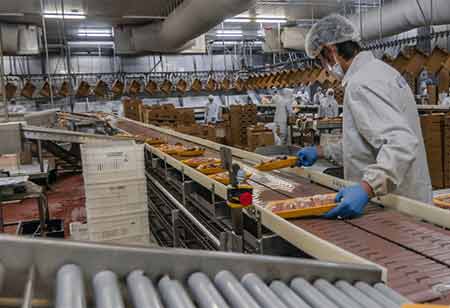Thank you for Subscribing to Food Business Review Weekly Brief
The Food And Beverage Industry Has Been Reformed By Big Data Analytics.
The Food & Beverage Industry is a significant component of the Global Market. Despite global challenges, this sector's operations continued to operate.

By
Food Business Review | Friday, January 21, 2022
Stay ahead of the industry with exclusive feature stories on the top companies, expert insights and the latest news delivered straight to your inbox. Subscribe today.

The quality of food is a significant factor determining the success of food enterprises and outlets. Temperature-sensitive products, like vegetables, fruits, and milk, degrade when the environment's temperature changes.
FREMONT, CA: The Food & Beverage Industry is a significant component of the Global Market. Despite global challenges, this sector's operations continued to operate. Restaurants and food outlets drill the brunt of the pandemic, but the supply chain remained operational. Furthermore, the food and beverage industry requires strong management. Every entity makes a significant contribution.
However, the food industry's competitiveness has increased over the last decade. Whether it is the requirement for quality food products or authentic cuisines, patrons' choices determine a brand's success. This influences the financial segment and the brand's popularity.
Many restaurants, food outlets, and food enterprises are forced to close their doors because they cannot meet customer demand or lack proper management. That is why the food industry needs a tool to help them overcome the different challenges in the food industry.
This article focuses on the significant use cases of big data analytics that can bolster the food and beverage industry.
Innovation
Customers are hungry for new ideas. And food is an entity that requires constant innovation. If a restaurant or food outlet constantly introduces new dishes or a food enterprise presents a new food product, the possibility of the business turning profitable is incredibly high by analyzing the customer's past preferences and choices; big data analytics aids in the development of new products and dishes.
This includes analyzing customer data with similar food or beverage preferences, the most popular ingredients among customers, and the dish or cuisine ordered the most frequently. Restaurants and food outlets can devise a dish that meets the earlier criteria. This permits food outlets and restaurants to stay ahead of their competitors.
Quality Control
The quality of food is a significant factor in the success of food enterprises and outlets. Temperature-sensitive products, such as fruits, vegetables, and milk, degrade when the environment's temperature changes. This has frequently become a significant bottleneck on the supply chain, mainly when raw food products are transported over long distances.
The supply chain cycle can be monitored by incorporating specific IoT-driven sensors that collect, process, and analyze data from their surroundings. Moreover, the IoT sensors will notify the user when a product has degraded and needs to be replaced. Robust data analytics software can track the arrival of materials and scan finished goods.
Furthermore, because adulteration is a significant issue in the food and beverage industry, big data analytics can monitor the products during production. This will increase the product's food safety.






